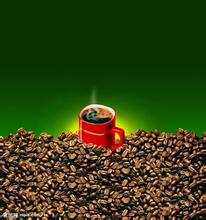Introduction of Tanzania Coffee Manor
Kilimanjaro, Mt.
Coffee Manor:
Total =?
90% of small farmers
10% plantation
Harvest time:
October to February of the following year
Coffee practitioners:
270000 people
Grade,
Handling method:
AA (14%)
A (24%)
The lowest grade is HP, which is produced at low altitude and has many defective beans.
To plant in the shade:
Mixed planting: coffee and banana are mixed to grow in the shade of banana trees.
Organic certification:
Uncertified: small coffee plantations use coffee as a cash crop, cattle and sheep provide it with natural fertilizer, and the industry uses it as food.
Major coffee growing areas:
Moshi area: Mt. Periphery of Kilimanjaro area
Arusha: Meru
Oldeani.
Pare: highland between Lake Nyassa and Taganyika, Songea-Ruvuma (south to Lake Malawi)
Output ranking:
Africa No. 8
World No. 24
Type of planting:
Kents
Bourbon, Typica/Nyara, Blue Mountain
Introduction time:
In 1893 Jesuit missionaries introduced the Arabica bourbon species; Ken introduced planting in 1920.
Recent planting evaluation:
The coffee cups made in Songea are well-behaved, reflecting the common characteristics of "northern" coffee. However, the coffee produced by Kibo has lost this characteristic because of the loss of flavor during transportation. Songea tastes clear and unrestrained, although it is still slightly more relaxed and mild than Kenyan coffee. This season, Nkoanekoli and Ngorongoro have also joined the ranks of coffee cultivation, which represents the development of coffee cultivation in other regions. However, there is a place where the coffee is stale and tasteless, with no performance in the cup. We have tested some garden beans, and they all have obvious "transportation problems", that is, the flavor of coffee beans has been lost in the course of transportation. But the problem is that although Tanzania is aware of the problem and has paid extra for it, the quality of coffee beans has not improved. So what can we do to encourage people to make mistakes and try their best to prevent the quality defects of coffee beans caused by transportation, so that their flavor can be better reflected?

Important Notice :
前街咖啡 FrontStreet Coffee has moved to new addredd:
FrontStreet Coffee Address: 315,Donghua East Road,GuangZhou
Tel:020 38364473
- Prev

Introduction to the flavor characteristics of Rwandan coffee
Rwanda is a small African country, and the local people are relatively poor, but it produces very good coffee here. Unlike its neighbors Kenya and Ethiopia, Rwanda's coffee is mainly round bourbon. The taste is not as prominent as Ethiopia and Kenya, but the Rwanda Coffee Association's mission is to manage and supervise the coffee industry in Rwanda.
- Next

An introduction to the development history of mocha coffee beans
The development history of Mocha gets its name from the famous port of Mocha. Transportation in East Africa was very underdeveloped in the 15th century, but it produced the world's most precious coffee beans, which were gathered in the Yemeni port of Mocha and shipped to Europe. Today, photos of mocha coffee production methods in the port of Mocha (11 photos) have retreated inland due to the accumulation of silt.
Related
- Does Rose Summer choose Blue, Green or Red? Detailed explanation of Rose Summer Coffee plots and Classification in Panamanian Jade Manor
- What is the difference between the origin, producing area, processing plant, cooperative and manor of coffee beans?
- How fine does the espresso powder fit? how to grind the espresso?
- Sca coffee roasting degree color card coffee roasting degree 8 roasting color values what do you mean?
- The practice of lattes: how to make lattes at home
- Introduction to Indonesian Fine Coffee beans-- Java Coffee producing area of Indonesian Arabica Coffee
- How much will the flavor of light and medium roasted rose summer be expressed? What baking level is rose summer suitable for?
- Introduction to the characteristics of washing, sun-drying or wet-planing coffee commonly used in Mantenin, Indonesia
- Price characteristics of Arabica Coffee Bean Starbucks introduction to Manning Coffee Bean Taste producing area Variety Manor
- What is the authentic Yega flavor? What are the flavor characteristics of the really excellent Yejasuffi coffee beans?

